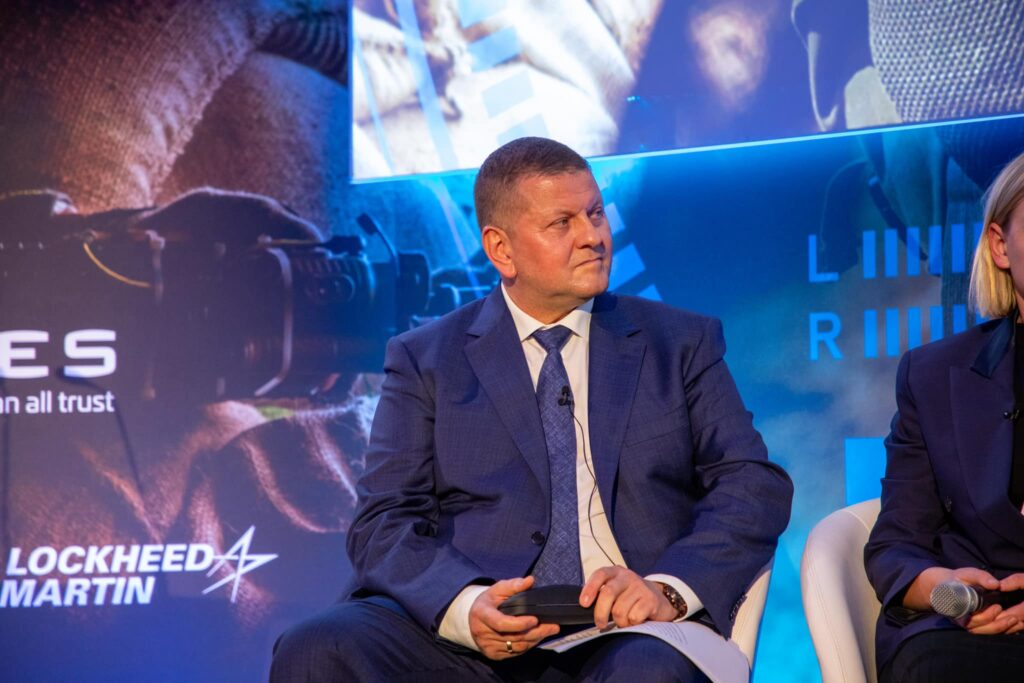“A completely new kind of war lies ahead” so Ukraine must outhink Russia by 2027, says Zaluzhnyi

Ukraine can win the war against Russia, but only by building “national resilience” systems and embracing asymmetric technological warfare rather than hoping for traditional military breakthroughs.
That’s the strategic roadmap from Valerii Zaluzhnyi, Ukraine’s former commander-in-chief and current ambassador to Britain, in a foreword that consolidates his strategic thinking developed over the past year.
Writing for journalist Roman Romaniuk’s upcoming book “What Will Be Used to Fight World War III?”, Zaluzhnyi argues that victory depends on adapting to a new kind of warfare that makes conventional operations increasingly impossible.
“The key to our victory is not just resilience, but decisive and timely responses,” Zaluzhnyi writes. But those responses must target infrastructure protection and technological capabilities, not territorial gains.
His analysis explains why current fighting has devolved into World War I-style stalemate—and why that’s actually creating Ukraine’s path to victory.
Why breakthrough operations won’t work
The precision weapons era that dominated warfare from the 1970s through 2022 has ended. Electronic warfare now blocks most guided munitions. Battlefield reconnaissance drones make troop movement lethal. The result is a grinding stalemate where neither side can achieve major territorial gains.
“When robots began to appear massively on the battlefield, they made any movement of soldiers impossible,” Zaluzhnyi explains. “We couldn’t move forward towards the Russians, and the Russians, accordingly, couldn’t move forward either.”
This isn’t temporary. Zaluzhnyi predicts the technological factors creating this deadlock will persist until around 2027, when new navigation systems and autonomous weapons restore the possibility of offensive operations.
But by then, both demographic and economic constraints will make large-scale territorial warfare prohibitively expensive.
The war is shifting toward “the remote dismantling of a nation’s capacity to resist” through systematic infrastructure attacks rather than front-line advances.
The new victory formula
Rather than lamenting this shift, Zaluzhnyi sees opportunity. Ukraine’s survival strategy becomes its victory strategy: build systems that can withstand remote warfare while developing asymmetric capabilities to target Russian infrastructure.
“The development of technology, along with the demographic and economic situation in the coming years, is likely to favour a war of attrition,” he writes.
Ukraine’s advantage lies in adapting faster to this reality than Russia.
The victory formula requires three elements:
- National resilience infrastructure: Power grids, transportation networks, and government systems designed to function under constant attack. Ukraine has already begun this transformation out of necessity.
- Asymmetric technological capabilities: Cheap, scalable autonomous systems that can target high-value Russian assets at minimal cost. Ukrainian innovation in drone warfare exemplifies this approach.
- Information warfare defense: Protecting public morale and mobilization efforts from Russian psychological operations designed to erode resistance.
“War strategy will focus not so much on capturing territory as on depleting the enemy’s resources and capabilities, creating chaos and ultimately eroding the nation’s capacity to resist,” Zaluzhnyi explains.
Why Ukraine can win this way
Ukraine’s advantages in attritional warfare are real but require strategic focus. The country has already demonstrated superior “tactical application and technological support” compared to Russia’s numerical advantages.
Ukrainian forces achieved decisive victories in 2022 using precision weapons like Javelin anti-tank missiles, HIMARS rocket systems, and Neptune anti-ship missiles that destroyed Russia’s Black Sea Fleet flagship.
But these successes came before electronic warfare created the current deadlock.
The next phase requires different tools. Autonomous drone swarms that can overwhelm air defenses. Cyber capabilities targeting Russian critical infrastructure. Most importantly, resilient systems that allow Ukraine to function while Russian infrastructure degrades.
“Large-scale attacks by autonomous swarms of cheap precision drones using entirely new navigation channels will destroy not only frontline personnel, weapons, and military equipment, but also the enemy’s critical economic and social infrastructure,” Zaluzhnyi predicts.
Russia lacks Ukraine’s innovation capacity and international technological support. Moscow’s strategy depends on wearing down Ukrainian morale faster than Ukraine can degrade Russian capabilities.
But if Ukraine builds proper resilience systems, this becomes a contest Ukraine can win.

The timeline factor
Zaluzhnyi’s analysis carries urgency. By 2027, technological advances will restore the possibility of massive conventional operations using “totally ruthless” autonomous weapons.
If Ukraine hasn’t established decisive advantages in attritional warfare by then, it could face much more dangerous scenarios.
“Artificial intelligence and machine learning technologies continue to develop at a rapid pace,” he writes.
“For the first time ever, human involvement will be fully or partially removed not only from the process of control, but also from decision-making about target engagement.”
The window for building resilience systems and asymmetric capabilities is narrowing. But Ukraine has already demonstrated what’s possible. The challenge is scaling successful innovations while protecting the infrastructure that keeps the country functioning.

Help Ukraine win the war through developing technology, like Zaluzhnyi says: support the David vs. Goliath defense blog to support Ukrainian engineers who are creating innovative battlefield solutions and are inviting you to join us on the journey.
Our platform will showcase the Ukrainian defense tech underdogs who are Ukraine’s hope to win in the war against Russia, giving them the much-needed visibility to connect them with crucial expertise, funding, and international support. Together, we can give David the best fighting chance he has.
Join us in building this platform—become a Euromaidan Press Patron. As little as $5 monthly will boost strategic innovations that could succeed where traditional approaches have failed.
Western implications
Zaluzhnyi’s framework has implications beyond Ukraine. Most NATO countries couldn’t handle the scale of attacks Ukraine endures regularly. “In October alone, Ukraine faced over 2,000 air threats, including drones and missiles,” he noted recently. “Few NATO countries could counter such an onslaught without exhausting their air defense systems.”
Western militaries remain focused on expensive legacy systems that become vulnerable in massive conflicts. Meanwhile, the real military revolution is happening in cheap, scalable, autonomous systems that Ukraine pioneered out of necessity.
“Half of winning is knowing what it looks like,” Zaluzhnyi concludes, quoting military strategist Sean McFate. “Brains are more important than brute force.”
Ukraine’s path to victory lies not in outgunning Russia, but in out-thinking it. Building systems that can survive what’s coming while developing capabilities Russia can’t match.
The war of attrition isn’t something Ukraine must endure—it’s something Ukraine can win.
More about how Ukraine can win
-
How Ukraine can win, p.1. Swarms of dirt-cheap drones decimate Putin’s armor
-
How Ukraine can win, p.2: The single drone target that could cripple Russia’s oil empire
-
How Ukraine can win, p.3: The only counteroffensive strategy that could break Russian lines
-
How Ukraine can win, p.4: Just repeat what Putin says
-
How Ukraine can win, p.5: Russia is winning the recruitment war. That’s also how it could lose.
